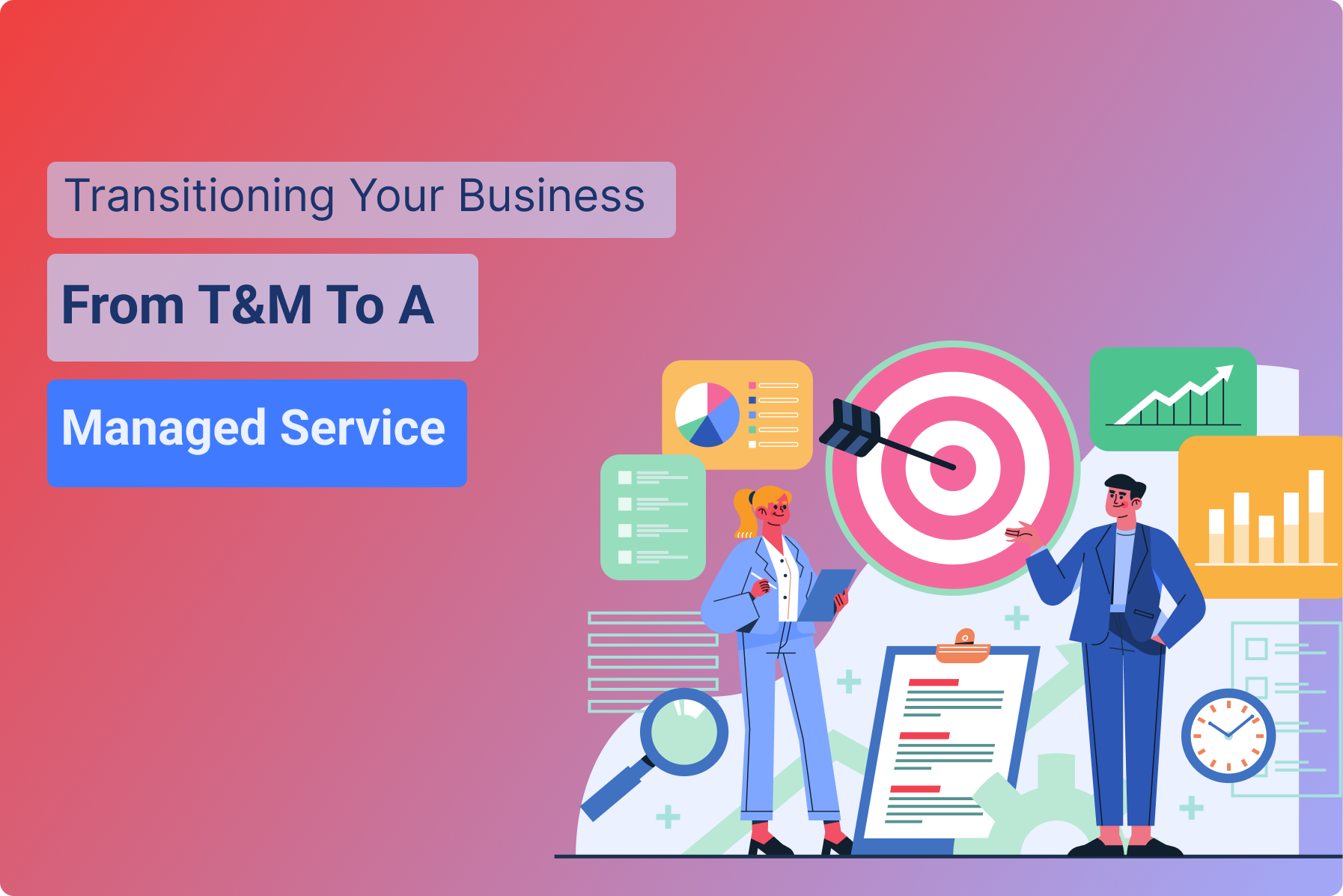
Transitioning from a Time and Materials (T&M) model to a Managed Service model can be a strategic move for businesses looking to enhance their revenue predictability, enhance customer relationships, and create long-term value.
This guide will help you maneuver this transition:
1. Key Differences between the T&M Model and the Managed Service Model:
Under the Time and Material Model, the clients pay for the time and materials used in a project, often resulting in unpredictable cost variables whereas in the Managed Service Model, there is a fixed fee for a set of predefined services, providing predictable revenue and cost structures.
2. Evaluate Your Current Business Mode:
– Determine and assess the strengths and weaknesses of your existing T&M model.
– Identify services that can be standardized and packaged into a managed service.
3. Define Your Service Offerings:
– Outline the services included in your managed service packages.
– Ensure these services align with your client’s needs and industry standards.
4. Pricing Strategy:
– Transparent and competitive pricing structure aids in effective managed services.
– Examine value-based pricing to reflect the benefits your services bring to clients.
5. Create Service Level Agreements (SLAs):
– The scope of services, performance expectations, and response times should be defined clearly.
– SLAs provide a foundation for accountability and customer satisfaction.
6. Technology and Automation:
– Invest in tools and automation to streamline systemized service delivery.
– Automation can reduce costs and improve efficiency, making the managed service model more scalable.
7. Customer Communication:
– Ensure transparent communication is followed. Clients encourage effective communication and transparency.
– Educate them on the benefits of the managed service model, such as cost predictability and continuous improvement.
8. Staff Training and Realignment:
– Train your team on the new service model and customer-centric approach.
– Align roles and responsibilities to better support the managed service offerings.
9. Marketing and Sales Alignment:
– Update your marketing materials to reflect the new service offerings.
– The sales team must be trained vigorously to communicate the value proposition of managed services effectively.
10. Risk Mitigation:
– Forecast potential challenges and have contingency plans in place.
– Address concerns from existing clients and provide assurances during the transition.
11. Monitor and Adjust:
– Habitually review the performance of your managed service offerings.
– Encourage and apply solicit feedback from clients and make necessary adjustments to improve satisfaction.
12. Legal and Contractual Considerations:
– Update contracts to reflect the new pricing and service structure.
– Ensure legal agreements are clear and protective of both parties.
13. Measurement and Reporting:
– Implement key performance indicators (KPIs) to track the success of your managed services.
– Regularly report to clients on the value delivered and improvements made.
14. Continuous Improvement:
– Foster a culture of continuous improvement within your organization.
– Use client feedback to improve your managed service offerings over time.
By carefully planning and executing each step, you can successfully transition from a T&M model to a Managed Service model, providing stability for your business and clients.


